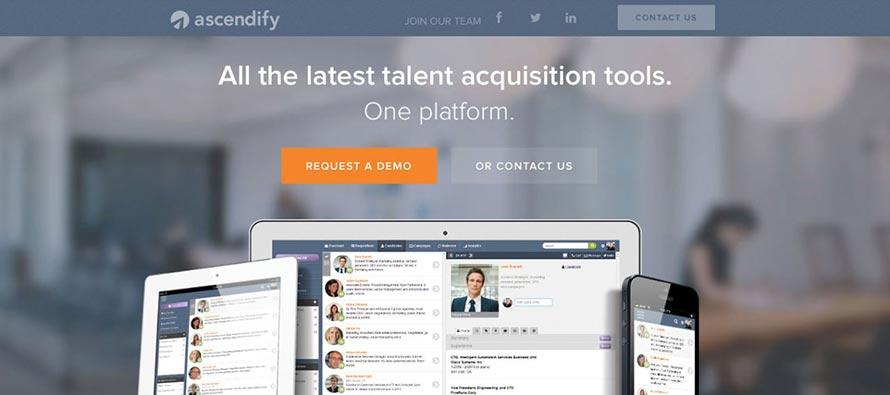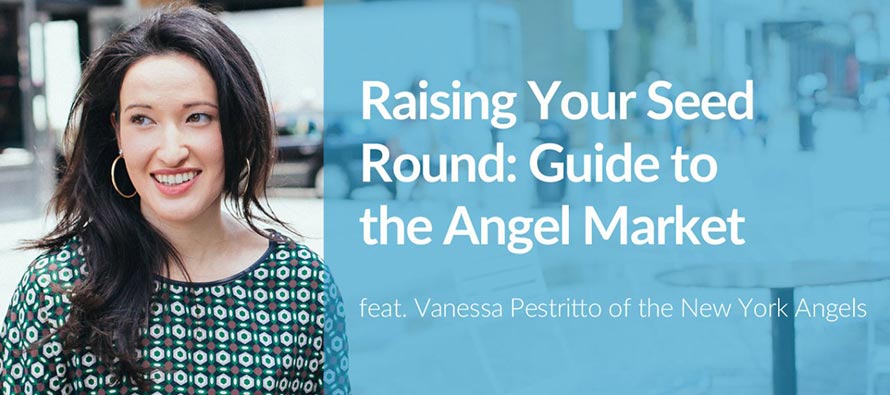
AngelList’s syndicates have changed early stage fundraising, joining rounds that once were filled only by individual investors or VCs. Keeping up with what syndicates can offer — and how to attract them — requires an inside look at how deals are being made right now.
Founders Network member Alexandra Greenhill (March ‘15 Cohort, Vancouver) asked members on the forum for advice on how to finish a seed round to become an AngelList startup. Dozens of founders added their own questions, so earlier this month we hosted an exclusive Founders Network Mentoring panel with Tyler Dikman and Devang Patel, two FN members experienced in fundraising strategy and AngelList syndicates.
LoungeBuddy CEO Tyler Dikman raised $125k last month from a syndicate to round out his $3 million Series A, led by Peter Thiel’s Founders Fund. Devang Patel, Simplr’s creator and a former developer at Apple, helps run due diligence for one of the most prolific syndicate leads on AngelList: Gil Penchina. To round out the discussion, we got input from AngelList founder & CEO Naval Ravikant.
Read on to learn from their experience about:
- Approach: When to list your company and strategic first steps
- Proof: How much you need to disclose about your company and why
- Scale: Deciding what to ask for (money, and more)
Tyler kicked off with the story of how and why a syndicate fit into the round Peter Thiel and Founders Fund just led for LoungeBuddy.
What are syndicates?
Syndicates operate as a form of evolved crowdfunding, connecting investors en masse with startups who might never have found them one-on-one. But the ecosystem is more nuanced than just reducing friction for small investors and the companies they support.
Founders get more than just money from a syndicate investment. Given the right connection, startups partner with a syndicate to raise their profile and credibility, and to connect with new sources of advice.
“An investor who had made a small investment in us was interested in potentially having us on as a syndicate”, Tyler says. LoungeBuddy had attracted enough interest that it wasn’t going to have a problem filling out its Series A. But they turned to AngelList nonetheless.
“We were doing it more as an opportunity for one of our existing investors to be able to try it out. And we thought it would be some great experience, and visibility for us as well.”
How to approach AngelList Investors
Founders build a presence on AngelList to start telling their story to investors, employees, and collaborators long before they’re actively raising.
“AngelList can be a great source of information similar to CrunchBase — being able to point potential investors there to learn about your company is valuable,” Tyler says.
But knowing how much information to share, at what stage to begin a round, or how to build the right fit with an investment syndicate isn’t obvious.
The best value that you can get out of AngelList is having a syndicate help to fill out an existing round with a solid invested lead, not to open a round and lead it solely on AngelList.
Lead investors for the most established syndicates bring enough backers to max out a round — only 99 backers can join the LLC for any given investment. And many deals won’t include that many people — if a startup sets an investment minimum at $5k when looking to raise $125k, they’re capping at a maximum of 25 backers.
“The challenge can be whom to let in, and whom to tell “you can join us next time,’” Devang says
Devang says. “This is where you can play around with the minimums in order to understand what kind of investors you want to bring in,” Tyler explained.
You probably don’t want to set your investment minimum to be $1k, maybe it should be $5k or more, depending on how many investors you’re planning on letting in to get to that magic number.
One of the big questions new founders ask is: to what extent does AngelList truly generate new relationships? Do leads genuinely initiate deals with previous unknowns, or do they just invest in a group of people they already know?
It turns out, the first step isn’t the hardest for founders. It’s not about getting attention, it’s what you do with it.
AngelList’s largest syndicate network on the platform takes cold pitches, but founders have to have something to show.
“You can contact me directly,” Devang says, “And connecting to Gil on Founders Network is one way to get our attention.”
But Penchina’s Syndicate focuses mostly on data, and they’ll want to see the real-world metrics for a released product and its performance.
Getting the connection is easy, but to get the funding, the metrics are the big game changers.
“I’ll do the due diligence by email first, and try to get back to the entrepreneur within 2 or 3 days”, Devang says. “If things are looking in the right direction, either me or someone else will do a phone screen, then we’ll go on from that point”.
“If you have already found a lead, and you’re looking to raise more, it gets our attention,”
Key metrics that will help you increase credibility when raising money
- A team with a track record
- Traction
- Customers
- Existing investors
An experienced syndicate lead will probably only agree to fund you for a certain amount if they’re already confident their backers will meet or exceed that subscription. This means that there isn’t a lot of uncertainty whether a deal will trend and close.
That’s a high bar to meet, but it also means that you only need to worry about winning over a lead. The backers will follow.
“If there’s scarcity and a timer running, then you can get people to move pretty quickly”, Tyler says. “If you’re at $850k and trying to get to a million, this can be a great way to do it”.
A well known investor syndicate lead is almost guaranteed to trend, because it is in AngelList’s best interest to make sure there is visibility. They get 5% of the carried interest, and they want to make sure that their deals go through.
“And if you have any other brand name investors, they should be doing most of the work when it’s time to fill out a round, not you as an entrepreneur”, Tyler says.
How can founders without a lead investor or a syndicate company do?
“It is literally taking your network and figuring out who you know, and who you know that knows someone you’re trying to get connected to,” Tyler says.
He had to build an 18-month relationship with Founders Fund at the same time he was connecting with a host of other prospective VCs. It can take years for mild interest to grow into a commitment.
But that’s not lost time, it’s relationship-building that pays off after many quarterly coffees and phone check-ins.
“When it came time for us to go out and raise, it became an easy conversation because they were already familiar with what we were doing. They liked what was going on, and were ready to become part of it,” Tyler says.
“It’s a long time horizon. No matter how quickly you think you’re going to gain traction, hope for that, bust your ass to get there, but also plan for the long term.”
If someone says it’s too early but expresses interest and a desire to stay in touch, do that, stay in touch. Those individuals could be future investors down the road.
Proof: How much you need to disclose about your company and why
As a startup builds its profile on AngelList and in real-world relationships, it relies on a combination of data and social proof to prove itself.
Public support from established investors is the gold standard to signal interest. Interest from top entrepreneurs or advisors builds even more cache, so if they’re investing their own time with you, it’s more valuable than just making an introduction.
“Their experience, insight into your industry, willingness to help you along the way, and their brand value far outweighs your valuation,” Tyler says.
“Even if you have to come in a little lower in order to get them, I’d say 9 times out of 10, that is probably the wise thing to do.”
Top investors sell your story for you, that should be obvious. But when it comes to startups with a very complicated technology, social proof becomes more fine-grained.
“If someone is investing in a very complicated technology that most people don’t understand — but certain investors are well known data scientists by background, and they get it — that’s the person you want to have as your lead,” Tyler says.
“They’re your external validation because no one can understand your product outside a 3-hour evaluation.”
Executing on this requires an attention to detail. Make sure your company’s AngelList profile is fully filled with a whole team, including advisors and investors. And don’t list only some supports’ investment amounts. Go all or nothing, or the site will generate an inaccurately low figure for your total fundraising.
“Just be aware that anything you put in there — even though it says ‘for investors only’ — will still be public information,” Tyler says.
“Be very cautious if you have any secret sauce you don’t want to have out there.”
Using the AngelList profile as a lead generation tool doesn’t require exposing proprietary plans. The tools to gradually disclose information are built into the platform (AngelList app), although they’re not always obvious.
You can make a pitch visible only to subsets of investors, or even to none of the backers at all. “We had one deal where Gil didn’t disclose anything to anyone, other than someone else who was investing in the startup,” Devang said.
Tyler listed LoungeBuddy privately, so that only syndicate lead Tyler Willis and his backers could review the profile.
“An important part of what makes us special is our long-term strategy and how we’re focusing on the travel industry. We didn’t feel super comfortable making all of that information essentially public to anyone who would be considered an “accredited investor.”
“We didn’t provide a lot of information on the profile and any syndicate backers who were actually interested in having a further conversation, we could have a quick conversation.”
“We want to look at month over month stats on traction long enough to normalize seasonality,” Devang says. “What we definitely want to see is some real work, and that the product is being used by users, or we’d like to wait.”
What numbers beyond basic growth are the ones Syndicates review?
When he’s assessing a startup for Penchina’s syndicate, Devang looks at the numbers beyond basic growth:
- What is the churn: how many customers are leaving or not renewing?
- What is the engagement: how long are people using the product, and how much value are they adding?
But for some products, particularly at consumer-facing startups, the conventional metrics aren’t necessarily an adequate way to tell your story.
“You may have to be creative and measure certain metrics that aren’t standard,” Tyler says. “Maybe you’re only growing 1 percent month-over-month, but every month your customer acquisition costs are going down 10 percent, or your organic growth is tripling.”
Because every syndicate has its own preferences regarding not just sector but also metrics for a successful bet, founders might have to talk to 5 or 10 different syndicate members to find the right match.
“These guys are your cheerleaders, promoters, and announcers. They know that their reputation is on the line too if they go out and back you,” Tyler says. “You have to make sure that they love what you are doing and are excited about it.”
Once they do agree, it’s more their reputation on the line than yours, because they’re the ones that have helped to guide you as far as the amount of money to raise.
Scale: Deciding what to ask for (money, and more)
When Tyler worked with Tyler Willis’ syndicate to lead a round for LoungeBuddy on AngelList last month, Willis had already drummed up unofficial commitments from the majority of his backers.
“Basically, $80k or $90k was already accounted for within minutes of him pushing it out there,” Tyler says. “We ended up closing in about 2 weeks from when the money was committed.”
Willis was able to invest further in a startup he supported, while also netting some carry from backers. The funding operates similarly to the VC model. After a liquidation event occurs, the syndicate see a profit, less its $8k LLC fee, AngelList’s 5 percent carry and whatever the syndicate lead gets as carry.
Tyler and Devang both agreed that AngelList syndicates are best used to supplement an early round that has already locked in a major investor.
The details of how to price the syndicate’s portion sometimes come down to marketing: oversubscribing an offer and subsequently expanding it might smack of insincerity — but, Tyler notes, “everyone does it.”
The syndicate invests as a single entity, meaning your cap table shows a single LLC and your backers enter on the same terms as any other in the funding round.
But there are ways the syndicates differ from a traditional funder.
- There’s limited administrative burden. Backers get some basic tax information and updates, but there is no requirement to provide detailed communication
- The syndicate lead functions as a first point of contact, and it is up to him or her to communicate with individual backers
But just because the relationship stays at arm’s length doesn’t mean that founders should overlook what individual backers might offer their company.
- Syndicate leads can spread the word for you among their backers. Looking for an industry connection? A big syndicate might have literally thousands of people in their network. Someone will know someone.
- Syndicate leads don’t typically expect a board seat. However, that doesn’t rule out advice and guidance, from them or others they know.
Venture Capital backers are famous for providing a suite of services beyond just funding when they pick a startup. AngelList is different, but that doesn’t mean its deals stick strictly to cash.
“Everybody’s different in this game,” Tyler says. “Not every single individual has connections to everybody else. Even if they want to help, they might not be the right people.”
“If you really expect to get advice and guidance, I don’t care if it’s from Gil Penchina or Bill Gates or from anybody; you need to ask what that value is that they can provide, and get some kind of commitment.”
That might look like:
- a monthly catch-up/insight phone call
- lunch every two months
- intros to 8 specific people in the industry
“If you can get a syndicate backer who is knowledgeable about your industry or has good knowledge or expertise, there’s an expectation that they’ll be able to provide you with some guidance,” Tyler says.
But it’s up to you to both identify what they can offer, and follow through on making that social payoff continue to deliver.
Q&As with Naval Ravikant, CEO and founder of AngelList:
Mentoring session, we asked Naval Ravikant, to round out the discussion by answering our members’ outstanding questions:
1. How should a founder start building relationships with syndicates/syndicate leads if they don’t already have a lead?
“Same as with any angel investor, seed fund or VC: find a mutual connection or just send them a polite, killer email. If your product and metrics are great, you don’t need an intro.”
2. Once you’ve built a rich profile, what are some next steps when you’re starting cold?>
“These days we’re mostly about online fundraising, so the best way to get noticed is to get someone with good backing or a good reputation with other investors to actively syndicate your deal.
Every time you add a current investor and that investor confirms, we’ll automatically notify their followers.
And finally, you can recruit, for free, from tens of thousands of candidates at https://angel.co/jobs.
In all cases, a completely filled out profile is helpful.”
3. Any stories of unexpected connections or surprisingly effective strategies that went beyond cold calling/LinkedIn?
“I think people underestimate how much a great product matters. Angels rarely invest pre-product these days. Building a great and compelling product and just mailing that around is a lot better than trying to find warm intros, etc.”
4. What about advice for a non SF/ Silicon Valley team, who are the syndicates open to investing beyond close-to-home?
“It’s a moving target, so check https://angel.co/syndicates. Foundry Group, Wayne Chang, Fabrice Grinda, Arena and 500 Startups invest in Boston, LA, NY, Boulder, Denver and internationally. I’ve done one investment in Japan, but I already knew the founder pretty well.
The biggest fear that angels have with investing remotely is that there won’t be enough people to lead the Series A locally when the time comes.”
Founders Network offers peer mentorship for over 500 tech startup founders. To learn more about FN, please visit www.foundersnetwork.com. If you are interested in learning more about our approval process, please click here.






